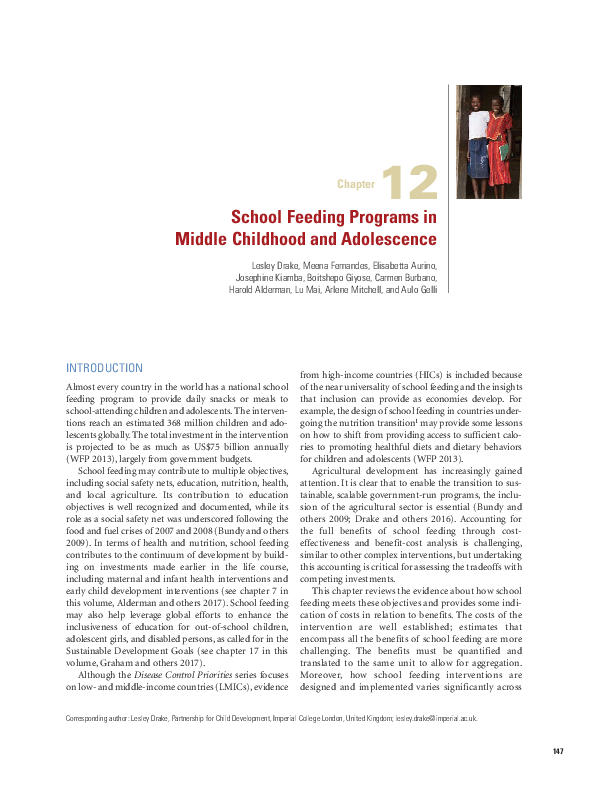
DCP Chapter 12: School Feeding Programs in Middle Childhood and Adolescence
Publication year:
2017
English
Format:
pdf (232.9 KiB)
Publisher:
The World Bank Group
This chapter reviews the evidence about how school feeding meets multiple objectives—including social safety nets, education, nutrition, health, and local agriculture—and provides some indication of costs in relation to benefits. School feeding remains common across low-, middle-, and high-income countries, but significant variation exists, driven by context. School feeding can serve to protect earlier investments in child welfare, buffering the effects of early shocks and contributing to the continuum of interventions from childhood through adolescence and into adulthood. School feeding also has the potential to address emerging issues such as the nutrition transition and could see integration with other school health interventions, such as deworming, for greater impact. Homegrown school feeding can not only change eating preferences of households, improve community incomes, and smallholder production and market access, but can also benefit investments in rural economies and contribute to national food security. The costs of school feeding vary significantly across countries, and future research remains necessary on the quantification of benefits to ensure more valid comparisons with other interventions.
>> Press here to return to the Disease Control Priorities (3rd Edition) Start Page
Read full abstract
Authors
View & Download
Document information
Publisher
Authors
Format
Rights
© Author/Publisher
Found a mistake? Help us improve!
If you have noticed a document assigned to the wrong author or any other inaccuracies, let us know! Your feedback helps us keep our data accurate and useful for everyone.
Share
Link

